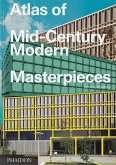In 1697, Augustus II of Poland (later Frederick-Augustus I, Elector of Saxony) enlarged the collections established by his predecessors and in doing so, inaugurated the most brilliant era in the history of Dresden. Besides Italian Renaissance and Baroque masterpieces, the collection, now housed in the magnificent Zwinger Palace, is comprised of a large number of 17th-century Dutch and Flemish paintings, and outstanding works by Spanish, French and German painters. banks. The Zwinger Palace was badly affected by water rushing through its vaults and storerooms, threatening its priceless art collections. All the works from the ground floors of the palace were carried to safety and a selection of 50 of the most important masterpieces are being shown at the Royal Academy of Arts in London in 2003. These include works by Mantegna, Titian, Poussin, Watteau, Durer, Cranach, Velazquez and Murillo. The exhibition opens with a group of Bernardo Bellotto's views of Dresden, which reveal Augustus' magnificent princely city in all its glory. famous works. Essays trace the history of the collection as well as the history of one of Europe's most spectacular, architectural capitals.
Hinweis: Dieser Artikel kann nur an eine deutsche Lieferadresse ausgeliefert werden.
Hinweis: Dieser Artikel kann nur an eine deutsche Lieferadresse ausgeliefert werden.








![Eero Saarinen: Buildings from the Balthazar Korab Archive [With DVD ROM] Eero Saarinen: Buildings from the Balthazar Korab Archive [With DVD ROM]](https://bilder.buecher.de/produkte/22/22741/22741483m.jpg)